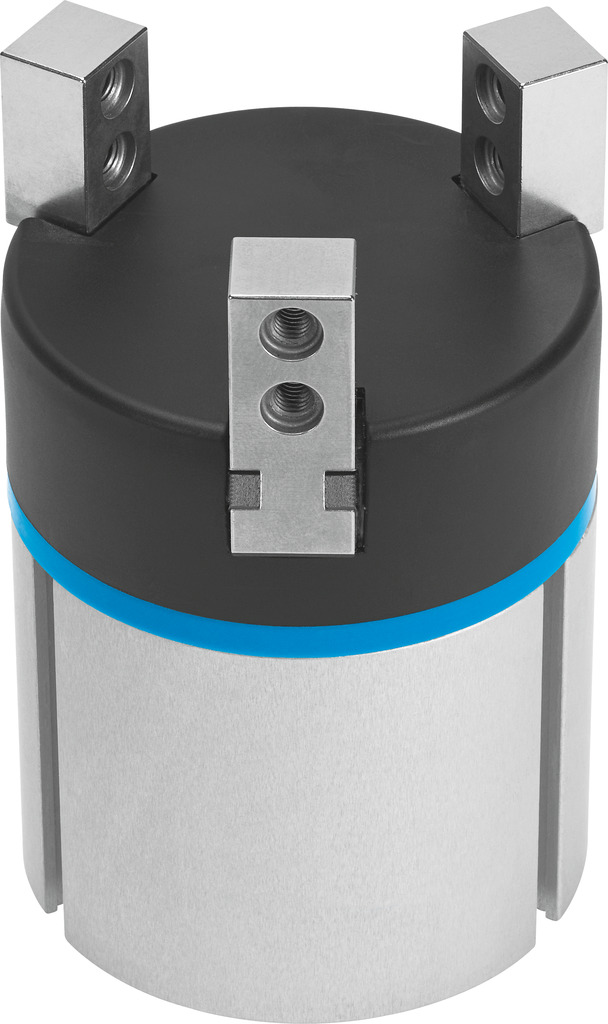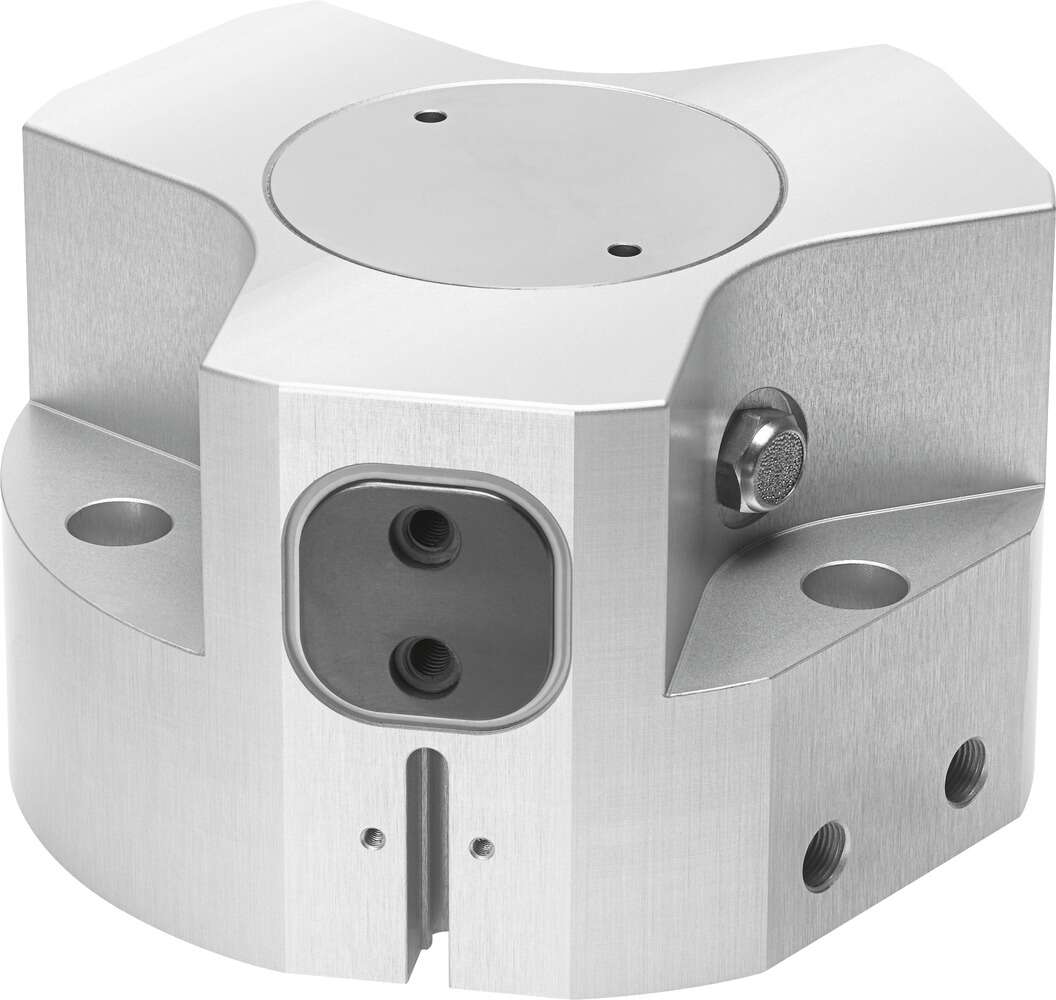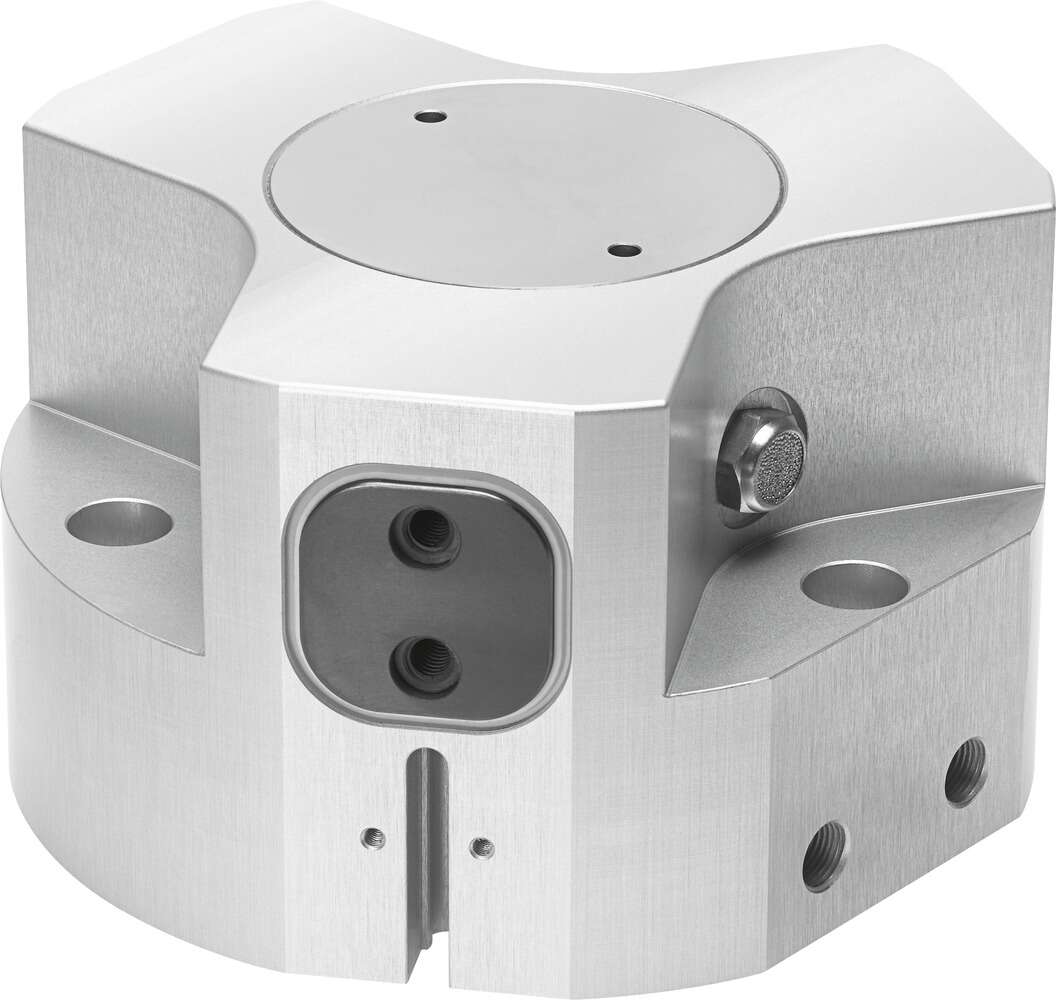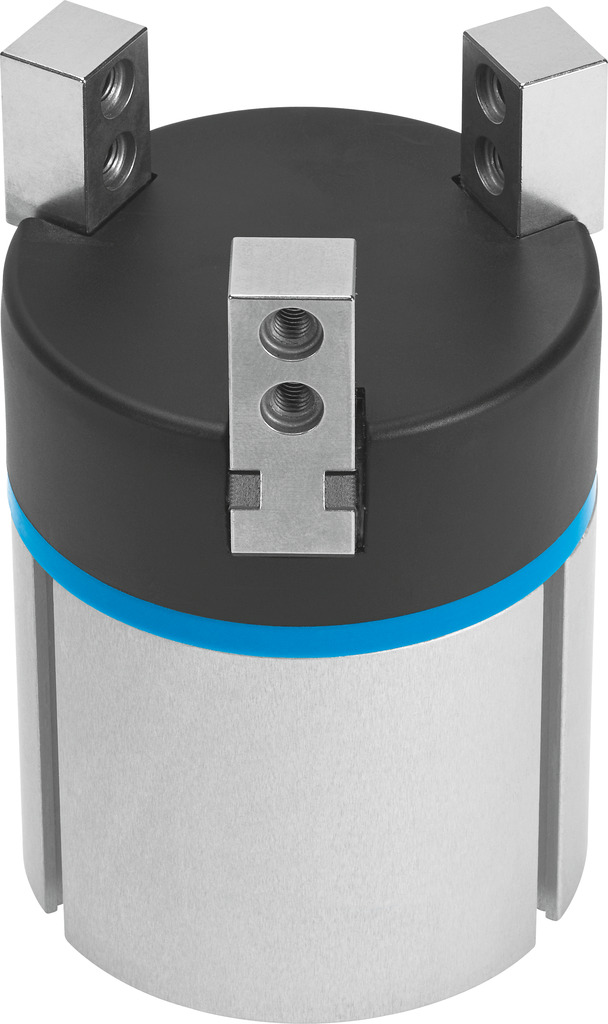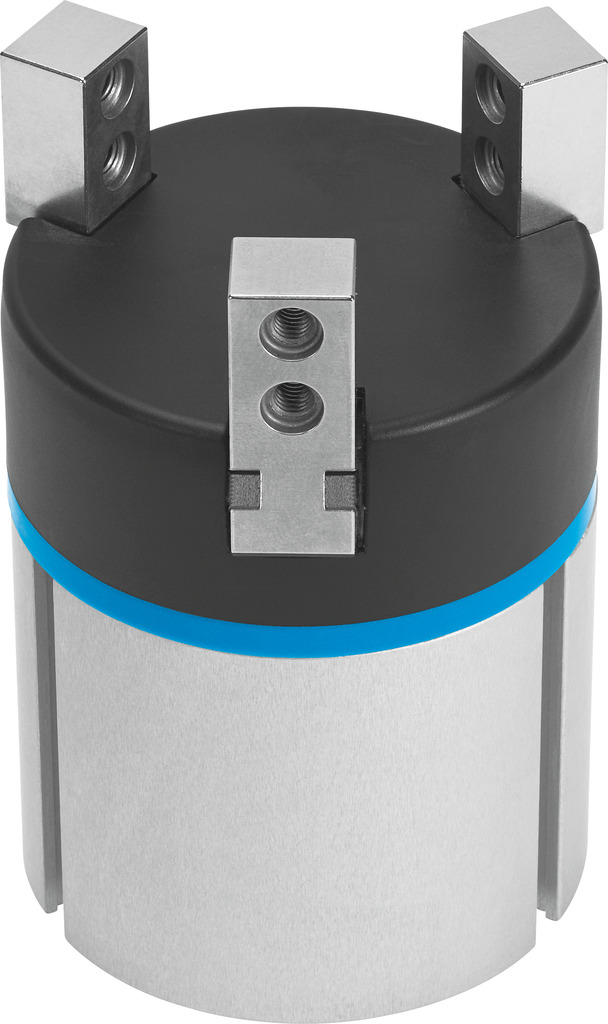The high-pressure chamber of the festo air gripper DHWS-25-A is connected to the gas cylinder, while the low-pressure chamber is for gas output and leads to the usage system. The high-pressure gauge indicates the pressure of the stored gas in the cylinder. The outlet pressure of the low-pressure gauge can be controlled by the adjusting screw. When using the electric cylinder, first open the cylinder, then turn the low-pressure gauge pressure adjusting screw clockwise, compressing the main spring and transmitting the diaphragm, spring washer, and plunger to open the valve. In this way, the imported high-pressure gas enters the low-pressure chamber through the high-pressure chamber after throttling and decompression, and then goes to the working system through the outlet. By turning the adjusting screw, the height of the valve opening is changed, thereby adjusting the amount of high-pressure gas passing through to achieve the required pressure value. The pressure reducing valve is equipped with a safety valve. It is a device that protects the pressure reducing valve and makes it safe to use, and it is also a signal device for the failure of the pressure reducing valve. The medium valve introduces the composition structure of the German cylinder; this keeps the piston moving between the air cushions (even if the load changes, it can improve the action characteristics). The speed of the forward and return stroke can be adjusted. The air flow is the same in both directions. Single-acting cylinder, with one-way throttle valve Single-acting cylinder, with throttle valve Exhaust and intake flow control Throttle valve, bidirectional flow control The speed of the forward and return stroke can be adjusted. The flow in both directions can be set to different values. By controlling the flow in both directions to adjust the speed, this is usually applied to single-acting cylinders and small cylinders. The advantage is that it is very simple. Standard throttle valve, with QS Adjusted by the groove screw, can be rotated 360° after installation Standard throttle valve, with Q quick connector GRLA--QS--D metal Low flow– Quick connector Q GRLZ--QS--D metal Low flow, adjusted by the knurled screw, can be rotated 360° after installation GRLA-…-QS-…-RS-D metal Low flow, adjusted by the groove screw, can be rotated 360° after installation Rotary joint can rotate 360°GRXA-…-QS-…-D metal Low flow Q metal Low flow Adjusted by the knurled screw Electromagnetic valves to prevent electrochemical corrosion, when transporting and installing stainless steel and aluminum equipment and accessories, surface scratches should be avoided, construction should minimize contact with other metals, if necessary, plastic cloth can be wrapped around. For the equipment and accessories of the electromagnetic valve, soft pads should be added at the binding places to prevent damage to the equipment. Lifting should be carried out in order to prevent rework. When installing accessories, handle them lightly, and choose a reasonable lifting position for heavy objects. High-pressure jetting method This method does not require cutting off the pipe, and uses some auxiliary equipment of the pipe itself for descaling. The diameter of the nozzle used is very small, and the descaling effect of the water jet is the best close to the nozzle. Suitable for cleaning medium and small diameter pipes. Analysis of the high-pressure water jet principle and a series of experimental studies show that the jet angle between 35°~45°, the aperture between 1.4~1.6mm, the number of holes between 8~10 will produce greater impact force and thrust. In urban construction, water supply, heating projects, pipes with smaller nominal diameter can choose welded stop valves, balanced valves or plunger valves, such as smaller nominal diameter
Pneumatic gripper DHWS-25-A belongs to the Clamping Jaws, Clamping Plates series under CKD company, model number DHWS-25-A. To purchase or inquire about Pneumatic gripper DHWS-25-A, you can directly contact 158 0047 0089 (Mr. He).


